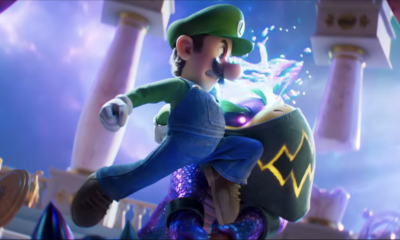News
Breaking the Stigma of Rap
[newsheader]

“We’re at the door. We’re trying to kick it open.”
Breaking the Stigma of Rap
Despite the commercial success of Yo Yo Honey Singh, Hard Kaur, and a few others, rap still elicits disdain from the larger population of India, when in actuality it is a community that’s burgeoning incrementally. A community fighting for “acceptance, respect and love”. soundplunge_test sets out to explore and demystify “Rap” as a genre in India and Pakistan.
Swag, swanky caps, high-end brands, skimpily clad women, money hurling, champagne on ice, Eminem, and Punjabi nectar from a beehive, are the most likely images to whirl around in your head pertaining to rap music. While local EDM and rock artistes have seen some handsome popularity in India, rap has always been the black swan trapped in the dingy sewers created by aspersions. We interacted with Mumbai-based rapper Lester Cardoz, aka Kav-E, who works closely on the freestyle rap initiative called Cypher Mania, to help us navigate through India’s hip-hop landscape. Kav-E, who grew up imitating Vanilla Ice, Fresh Prince of Bel Air, and Arrested Development from the ‘100% Rap CD’ (image below), summed up rap music’s status in our country as, “We’re at the door. We’re trying to kick it open.” But the question is, when?
Primarily categorized as ‘Underground’ music, rap has gained far more popularity in the West than in India. The illicit and unhindered nature of lyrical content may have acted as an obstacle from gaining a larger audience base. But it is the same reason that classifies it as an elusive genre. For Kav-E, who started rapping in 2008, it’s a simple form of expression. He loves the freedom it allows him, vis-a-vis any other form of music where liberties are curbed. But that doesn’t mean he’s willing to sacrifice being known as a worthy rapper. He’s confident that the upcoming breed of rappers in India, be it Delhi, Mumbai or Kolkata, are in the age group of 20 to 25 and thus have time on their hands. But he wants to make sure it’s worth their while.

Kav-E’s Childhood Treasure
For someone who started off as a poet and eventually graduated to rap, Kav-E feels it was upgrading his poetry, or as he calls it “poetry on a beat”. But the real deal is that all rappers are essentially poets. The progression from a poet to a rapper is as natural as a writer moving to stand-up comedy. Since 2012, Kav-E has also been actively involved with rapper Ashwini Mishra’s (the man behind the term “Hip Hop Journalism”) Cypher Mania project that emphasizes the importance of punch lines in freestyle rap. The project, that happens almost every fortnight, conducts rap sessions, workshops, and introspects on each of their individual rapping skills. Again, picking up from the common western rap fallacy, most rappers tend to use swear words to beef up the argument. Kav-E’s agitated concern remains, “We want to emphasize that battling is about making sense and being intelligent and not about cussing.”
However, promoting themselves is something rappers are not very savvy with. To them, having Facebook pages does not prove as fruitful as collaborations and live performances. “For me, it’s more like word of mouth. I try to collaborate with graffiti artists or DJs. Thanks to BITS Pilani (where I participated in the rap battle), people from north India got to know me. We keep sharing each other’s work on our pages. The rap song ‘What’s Yo Numba’ (by GD Singh aka Da Sikh Rapper) is a Punjabi track creating waves now in the underground scene. Whether I grow, or rap grows as a community, I just want the perception to change.
He articulates an interesting thought on rap, “It can be uplifting if you pay careful attention. People connect to the words. For example, I know people who don’t listen to too much of the newer Hindi songs today, but they go back to the 70s and 80s because back then words (of songs) had more meaning. I mean there are people who enjoy music from today and they love to dance to it, myself included. But you get my point.”
Believe it or not, Pakistan’s rap music is also a formidable arena, which is in close contest to its pop music scenario. After Bohemia and Billy X, Karachi-based rapper Talhah Yunus, ex-member of the Young Stunners, known for the track “Burger-E-Karachi” comes to most minds in Pakistan. 17-year old Yunus believes that rap music is the “music of the streets” due to a very inherent use of “street language (slang)”. Notwithstanding, it is still commercial music. “I believe that a rapper can also be a mainstream artist if he knows how to play with the audience. And if he knows that, I see no difference between a Pop Artist and a Rap Artist.” Who would’ve imagined rap to be as accepted as pop music in Pakistan?

Pakistani rapper Talhah Yunus
Sadly, our country is only exposed to a uni-dimensional sub-genre of rap. That said, Rajesh Marar of Mumbai-based event company Culture Shoq, which has hosted over 400 events in the last 5 years, confirmed a definitive growth of rap as a community and culture in the past five years. Culture Shoq has been conducting Big Mics for Poetry and Rap among other formats that accommodate first-time comics, live bands and magicians. He feels, “It’s (rap) just like poetry but the presentation style in very different. Since it’s emerging as a stream of its own and has its own identity in the country we felt the need to have separate nights for rap.”
Rappers have their own style. You cannot expect Eminem to not be frustrated when he’s performing. It doesn’t fit. There’s almost an eerie impression that rap is meant for the West and the Indian tradition is going to take a mild beating in its stead. It’s not in our sensibilities to listen to home-grown rap. But when, let’s be honest, one Honey Singh enters Bollywood, his fan base grows incalculably.

Yo Yo Honey Singh -Taking rap to the masses
Bollywood also has had its fair share of rap incorporated into its songs. Akshay Kumar’s “Naam Mera Akshay Kumar” from the film Chandni Chowk to China, “Right Here, Right Now” from Bluffmaster, and “Move your body” from Johnny Gaddar among others hints at a very fundamental fact that rap exists in its entirety and is being consumed through our film industry. But when it is mentioned otherwise, silence runs through the air. In 2009, Baba Sehgal, one of India’s first rappers, expressed concerns regarding the misconception of the genre when he said that using words like ‘pump it up’ and ‘jump in the air’ do not make up rap songs. He felt Desi rap should be given a chance rather taking after westernized styles.
So, when a Bollywood song uses a rap inclusion, the rapper attached to it naturally gets noticed. From Baba Sehgal, to Bohemia to Ishq Bector and Honey Singh, they all got captured by the lens. A more topical reference would be of 21-year old Ankur Johar aka Enkore. Winner of Best Hip Hop Artist at the Radio City Freedom Awards, Ankur earned a chance to rap for Chennai Express’ “Ready Steady Po”. Johar says, “Rap is just a part of singing (in Indian music). It’s either a gimmicky/comic part or a part which is a western musical concept with materialistic indulgences, bravado, lavish lifestyles or aggression (and misogyny, homophobia, promoting unhealthy lifestyles, etc in the worst case)”.

Ankur Enkore Johar
With stone on heart he accepts the fact that the genre won’t reach out as far as other genres without commercial backing, but also affirms, “Eventually I do feel like if we just work hard and respect the art and culture, we will slowly but steadily gain all three – acceptance, respect and love.”
You can join the Cypher Mania group here. Follow The Voice of Tha People Show here.
[newsfooter]




































